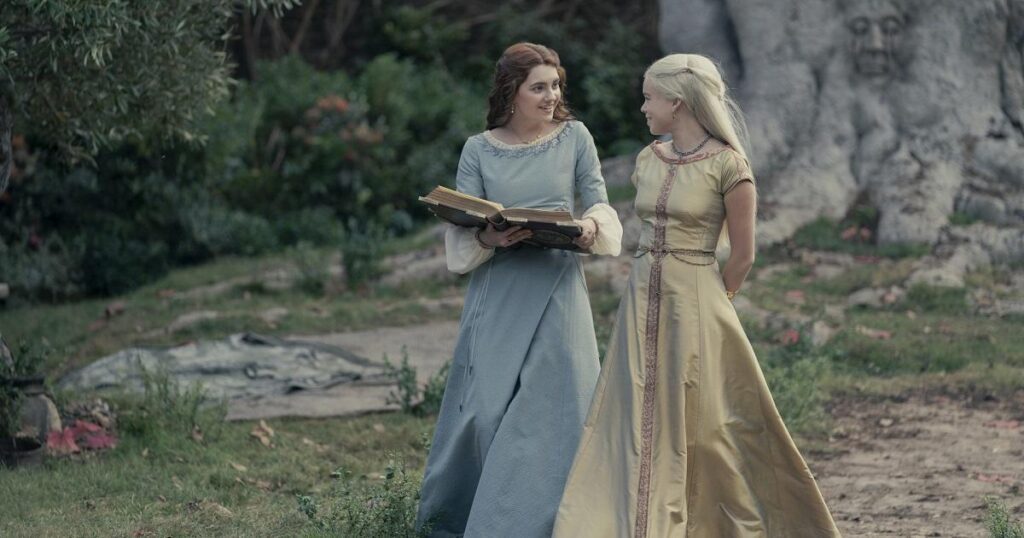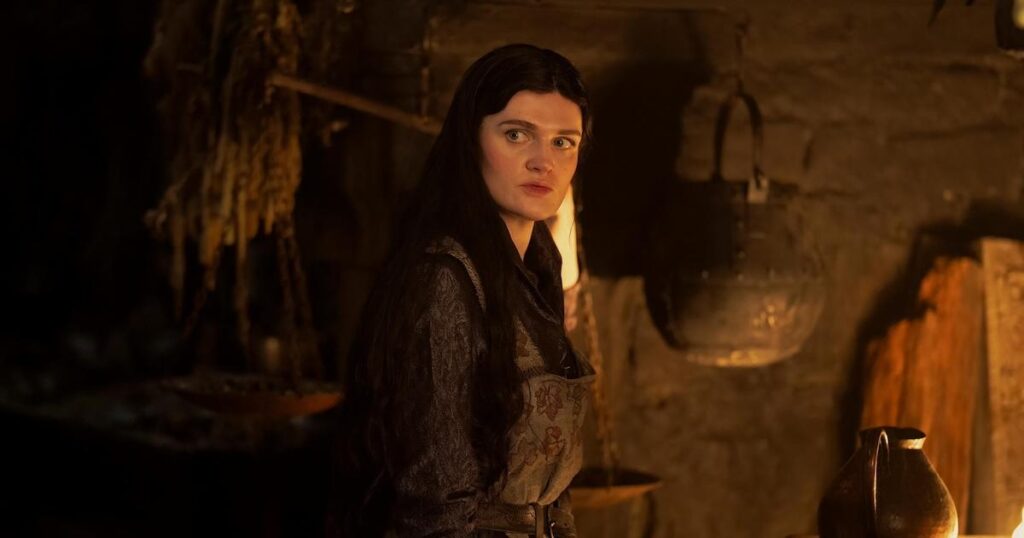
House of the Dragon focuses mostly on the fiery side of George R.R. Martin‘s A Song of Ice and Fire, so it’s a surprise to say that it is handling the icy white walkers and old gods of Westeros better than Game of Thrones did. The series has made a few small but significant changes to put the wierwood trees, The Wall and the threat of the the Long Night into a story that easily could have ignored them. With Season 2 now halfway over, it’s safe to say that House of the Dragon remembers, and winter is coming.
Even casual fans likely noticed one massive change that House of the Dragon Season 1 made – it placed a wierwood tree in the Red Keep at King’s Landing. In Martin’s books, the Red Keep is one of the only castles in Westeros not builty around a wierwood, and the reason for this change still isn’t entirely clear. Some fans wrote it off as a thoughtless set piece, while others got right to work crafting fan theories – like this increasingly plausible one saying the Master of Whisperers Larys Strong (Matthew Needham) is a skinchanger, for example. Now, it’s starting to look like a thesis statement. It appears the plan to integrate the old gods into the Dance of the Dragon branches out much further from there.
Those who read Fire & Blood – the Westerosi history book that House of the Dragon is based on – always knew that the real influence of the old gods would come in when the story reached Harrenhal. That came in last week’s episode, when Daemon (Matt Smith) flew to the Riverlands expecting a fight at a legendary monolith, but instead landed in a ruined castle meeting no resistance. The castellan, Ser Simon Strong (Simon Russell Beale) offered up his allegiance freely and invited Daemon to join him for dinner. When explaining his loyalties, he notes that it’s hard to start a fire at all “in this damp place.”
Our next view of Harrenhal had a wierwood in the foreground before cutting to Daemon in his allotted chamber, where we gradually realized we were in a dream sequence. It led Daemon to a room with a fire crackling, where he faced a vision of a younger Rhaenyra, played again by Milly Alcock. She was sewing the severed head back onto young Jaehaerys (Jude Rock).
“Always coming and going, aren’t you?” Rhaenyra said. “And I have to clean up afterwards.” Daemon looked like he might be on the verge of tears for a moment, but with one hard cut of the camera, his expression changed to anger. Now Daemon is standing outside in front of the wierwood tree in the courtyard of Harrenhal. Behind him is Alys Rivers (Gayle Rankin), who warns: “You will die in this place.”
That scene was a promise that Episode 4 was eager to fulfill, kicking off with another eerie vision for Daemon and some ominous moments in Harrenhal. These scenes don’t really resemble anything that we saw in Game of Thrones, but they should – they are an incredible adaptation of the kinds of dreams and visions Martin utilizes for foreshadowing in his books. Those visions are essential to the atmosphere of the story, and seeing them here on screen already puts House of the Dragon a step above Game of Thrones, as far as I’m concerned.
These visions are also the best answer to the question that plagued House of the Dragon in development – and which plagues all prequels, in a way: How will this story have stakes if we already know how it ends? House of the Dragon is based on a companion piece to A Song of Ice and Fire, and we know most of what happens in the intervening century and a half. The show has chosen to raise the stakes by tying this story to the main plot where it can, and it does so most successfully with the wierwood lore, not the dragon lore. That’s because the show is willing to break new ground with the wierwoods, while we don’t know much more about dragons than we did when this series started.
For comparison, take the dragon eggs introduced in Episode 3. Director Geeta Vasant told Forbes that those eggs were meant to be the same ones Daenerys will hatch in Game of Thrones. This ostensibly ties the two series closer together, but without much effect. Now we have another point of connection between Dany and her similar ancestor, Rhaenyra, which is good for the marketing of the series.
However, the explanation in the books is much more powerful. There, Dany’s eggs were stolen from the Targaryens by a princess’ lover, who sold them to the descendants of slaves who escaped Valyria. From there, Dany acquired the eggs while she herself was enslaved – a neat, cyclical story that touches on many of the most important themes in Martin’s work with just a few sentences.
It’s hard to think of a single MacGuffen for the old gods that compares to those eggs, but take for example the bloody drink that Alys gave to Daemon in Episode 4. It wasn’t mentioned in the books, but it didn’t need to be, so nothing is subtracted from the story there. At the same time, it doesn’t come out of nowhere – it is probably related to the bloody “wierwood paste” drink that Bran Stark got from the Children of the Forest in order to become a greenseer.
That could have implications for the plot and the mechanics of magic in Westeros, but even if it doesn’t, it adds to the feeling of density in the setting, and makes it feel more real. On top of that, the fact that Alys was somehow able to compel Daemon to drink the potion carried just as much threat as a CGI dragon the size of a passenger jet – if not more.

In fairness to House of the Dragon, the show has done right by the Targaryens in many ways. It confirmed the longstanding theory that they conquered Westeros based on a prophecy about the Long Night, and it has shown us a few other neat details about their past and culture. Still, since the show is set during the height of Targaryen power, it feels a bit stingy that we haven’t learned more secrets, like the history of the prophetic dreams that allowed them to escape the Doom. If nothing else, we could be getting hints about when and how that knowledge was lost.
Without doing any “retcons,” the depictions of wierwood magic in this show manages to imply the persistent influence of that magical force in Westeros at a time when many characters – and readers – did not consider it a factor. It also seems to fit into the plot more seamlessly. Much as the story set the table for war in Season 1, it also set the table for magical revelations in the coming seasons, and Alys Rivers began to pay off that set up in Episode 4. Her casual reference to the ghosts of Harrenhal, the spirits released from felled wierwood trees, and her announcement that she is actually an owl, not a woman, were the best worldbuilding Westeros has gotten on screen in years. It all hints that the show could take her story just about anywhere. In other words, this franchise’s reputation as “fantasy for people who don’t like fantasy” has been relaxed, and it now has the freedom to be deeply esoteric when it needs to be, just as Martin intended.
House of the Dragon Season 2 continues for four more weeks on Sundays at 9 p.m. ET on HBO and Max. Martin’s books, including Fire & Blood, are available now in print, digital and audiobook formats.
